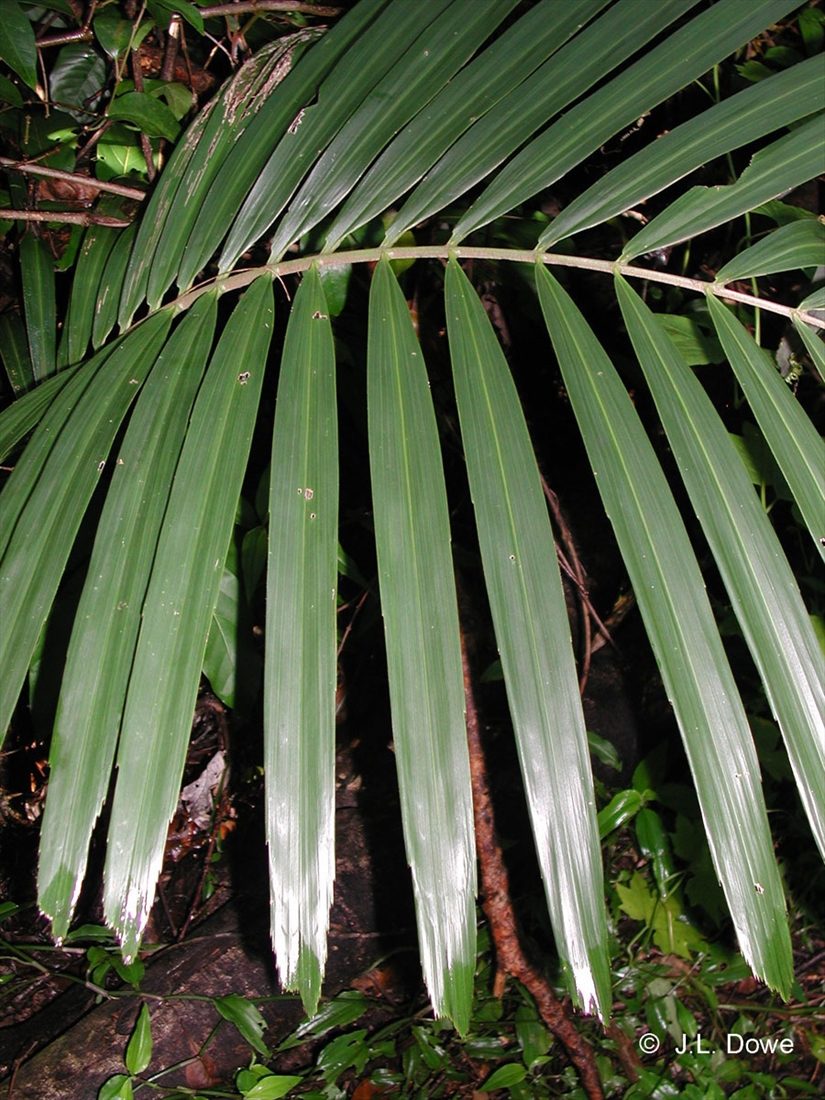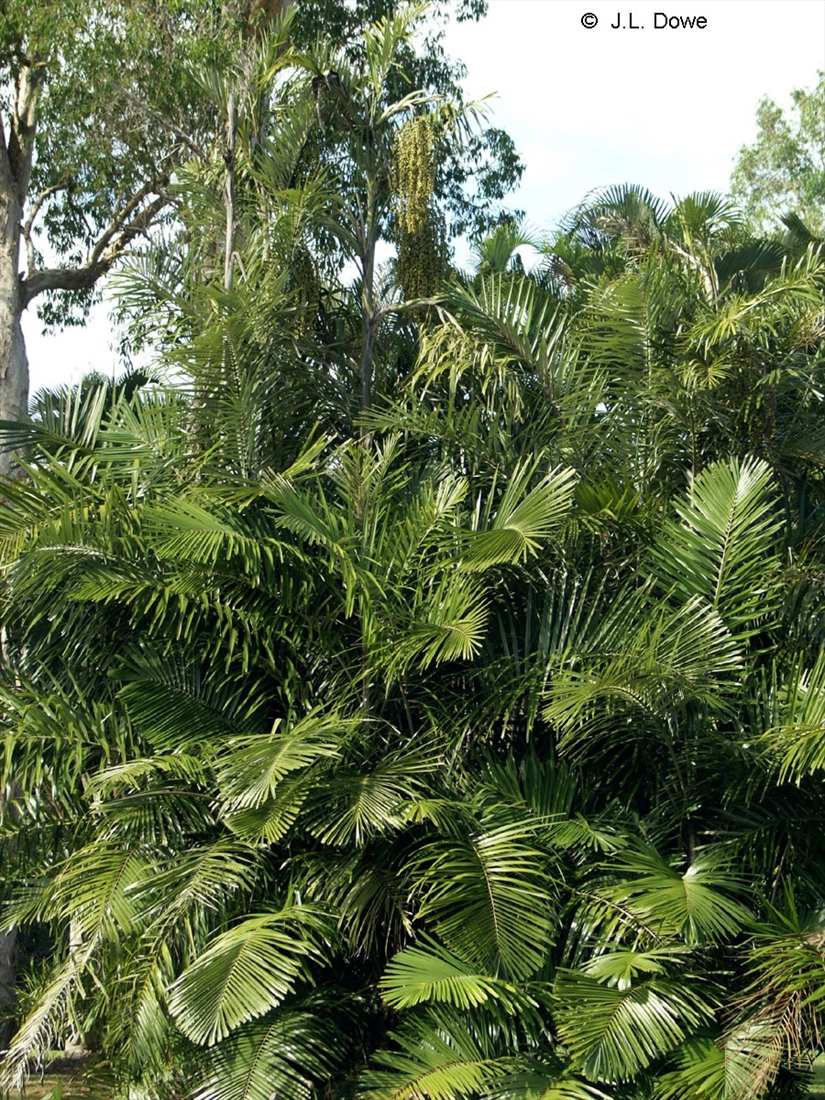Australian Tropical Rainforest Plants - Online edition
Arenga australasica (H.Wendl. & Drude) S.T.Blake ex H.E.Moore





Moore, H.E. (1963) Gentes Herbarum 9(3): 268.
Australian Arenga Palm; Southern Arenga
Multi-stemmed palm up to 20 m tall with numerous suckers around the base, stems up to 30 cm DBH. Older stems are light coloured and ringed with leafbase scars in the younger part, trunks clothed in dark fibrous leaf sheaths.
Leaves pinnate, up to 3.5 m long. Leaflets 78-142 per leaf, narrow, stiff, pleated, dark green above and lighter below, apices notched and grows from the rachis at a 30° angle to create a V-shaped leaf. Terminal leaflets are fused at their bases and fishtail-like. Pinnae silver-grey on underside.Crownshaft absent.
Inflorescence from the upper leaf bases and progressively down the stem, 1-2 m long with 38-44 unbranched pendant panicles of yellowish male and female flowers. Sepals 3, petals 3. Flowers in clusters of 3, one female flower and 2 male flowers.
Features not available.
Occurs in the CYP and NEQ. Altitudinal range from near sea level to 240 m. Grows in rocky soil in rainforest, vineforest, monsoon forest,
Flesh from the fruit is highly caustic (Cronin 1989).





